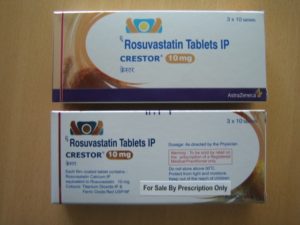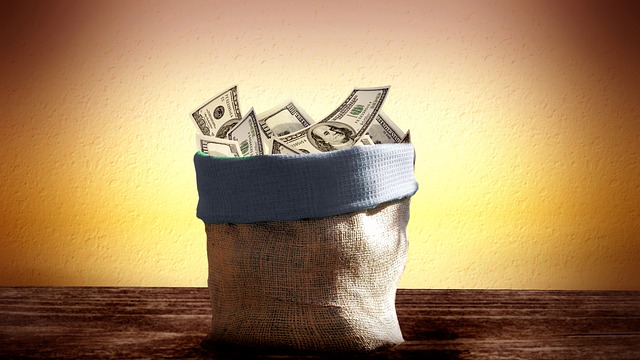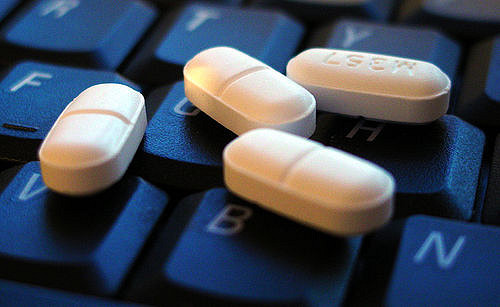by Gabriel Levitt, President, PharmacyChecker.com and Prescription Justice | May 12, 2016 | Drug Prices, FDA, Generic drugs, Local Pharmacies, Online Pharmacies, Saving Money on Prescription Drugs

Brand Name Crestor: Made in Puerto Rico under FDA’s regulations.
Rosuvastatin is now available in U.S. pharmacies as a generic but you can get Crestor 10mg, the brand version, 94% cheaper online. To put some flesh and bones, dollars and sense (pun intended) to this percentile: Ninety pills of generic rosuvastatin cost a whopping $795 at a Walgreens in Brooklyn, NY, but 90 pills of brand name Crestor is $45.65 at a low-cost international online pharmacy, one that is verified by PharmacyChecker.com.
What about using a prescription discount card to buy generic Crestor? Drug price comparison company GoodRx offers a coupon to be used at Rite Aid Pharmacy for a price of $329.52 – still more than seven times the price to get Crestor from an online pharmacy.
Care to know where these drugs are made? It may surprise you. (more…)
Tagged with: Crestor, rosuvastatin
by Gabriel Levitt, President, PharmacyChecker.com and Prescription Justice | May 6, 2016 | Drug Prices
Millions of American consumers are buying medication online from pharmacies outside the U.S. at much lower prices than at home but some are not doing it safely. Since 2003, we at PharmacyChecker.com have been checking the credentials of online pharmacies to help you stay safe, as well as making it easy for you to compare and find the lowest drug prices. For those who may be unfamiliar with how we do this, we’ve created a slideshow.
[metaslider id=5128]
The slideshow explains that the main reason many drug prices are lower online is because drugs are often much less expensive outside the United States. It’s that plain and simple. People can save as much as 95% on their medications. And while the U.S. FDA discourages people from getting their medication this way and generally considers it not to be legal, no one has ever been prosecuted for purchasing medication for themselves this way.
Unfortunately, the overwhelming majority of websites selling medication are not verified for safety, don’t require a prescription, and may sell counterfeit, adulterated and expired medication. In contrast, medications ordered from online pharmacies verified by PharmacyChecker.com are dispensed from licensed pharmacies that require valid prescriptions and meet high safety standards.
I hope the slideshow is helpful and encourage you to share it with others.
Tagged with: Drug Prices, international pharmacies, Slideshow
by Gabriel Levitt, President, PharmacyChecker.com and Prescription Justice | Apr 29, 2016 | Drug Prices

Executives from Valeant Pharmaceuticals were lambasted about their pernicious business strategy by members of the Senate Special Committee on Aging at a congressional hearing this past Wednesday. I’m glad the hot spotlight continues to shine on the faces of pharmaceutical company executives for runaway drug prices in America, but let’s not go too far differentiating Valeant from many other bigger pharmaceutical companies. While there are important nefarious nuances to Valeant’s practices, their executives were essentially called out for trying to do what all drug company business executives do: make as much money as they possibly can.
Valeant Chief Executive J. Michael Pearson’s contrite response was surreal: “Let me state plainly that it was a mistake to pursue, and in hindsight I regret pursuing, transactions where a central premise was a planned increase in the price of medicines.” I’m sure Mr. Pearson has regrets – even pharma execs feel bad about what they have done – but is the regret really felt for pursuing a business strategy of maximizing drug prices in the U.S. market? As a rational business actor, that’s what his job is as CEO of a publicly-traded company. Isn’t that what all CEO’s of pharmaceutical companies do? Yes, but…
Valeant is viewed as particularly pernicious because its price hikes for critical medications Nitropress, Isuprel, Syprine, and Cupermine, were 310%, 720%, 3,200%, and 6000%, respectively. Even worse these medications are old drugs, not new innovative medications. Those increases make average patented, brand name drug price increases of almost 15% in 2015 look paltry, even when that average exceeded inflation in leaps and bounces, which was under 1%.
(more…)
Tagged with: Aging Committee, phrma, Susan Collins, Valeant
by PharmacyChecker.com | Apr 8, 2016 | Drug Prices
 Earlier this week one of the largest medical organizations in the country, the American College of Physicians, published a position paper on ways to stem the rising cost of prescription medication in the U.S. Some of the recommendations in this article include requiring greater transparency in the cost of developing drugs, taking into account the cost-effectiveness of treatment when evaluating drugs, and allowing government agencies to negotiate volume discounts for prescription drugs.
Earlier this week one of the largest medical organizations in the country, the American College of Physicians, published a position paper on ways to stem the rising cost of prescription medication in the U.S. Some of the recommendations in this article include requiring greater transparency in the cost of developing drugs, taking into account the cost-effectiveness of treatment when evaluating drugs, and allowing government agencies to negotiate volume discounts for prescription drugs.
The ACP report also recommends looking at legislation that would allow the reimportation of some drugs manufactured in the United States. One study it cites claims a 24% savings when using Canadian pharmacies versus local U.S. chain drugstores. According to our research, the savings can often be far greater, sometimes more than 90% when using a verified international online pharmacy!
PharmacyChecker.com would like to applaud the efforts of this physicians’ group in finding new and better ways to lower prescription costs for consumers.
by Tod Cooperman, M.D., CEO, PharmacyChecker.com | Mar 31, 2016 | Cancer Drugs, Drug Prices
There has been a lot of news this week about the outrageously high cost of Xtandi, a drug for advanced prostate cancer. Although developed with funding from the U.S. National Institutes of Health (NIH), Xtandi (enzalutamide) is being sold to Americans at about four times the price at which it is sold in other countries. In January, a petition was sent to have the U.S. government step in and require that Xtandi be priced more fairly for Americans. More recently, several congresspeople and senators, including Bernie Sanders, reiterated this request with their own letter to the Secretary of Health and Human Services and the Director of the NIH.
According to the petition, the Japanese company licensed to sell Xtandi, Astellas Pharma Inc., and its U.S. marketing partner, Medivation Inc. charge an average wholesale price of $88.48 per 40 mg capsule in the U.S. However, in Japan the price is just $26.37, in Australia, it is $23.46, and just across the border in Canada the price is only $20.12.
If you only had to take a few capsules of Xtandi for a short time, this might not be such a big deal. But a standard dose of Xtandi is 4 capsules per day for months at a time. That’s 120 pills per month. So the cost of just a one-month supply of 120 pills at the average wholesale price is $10,617. That’s right, over $10,000 per month! If you must get Xtandi and you don’t have insurance which covers it, what are you to do?
First, if you have no insurance or poor insurance and a household income of $100,000 or less, you can apply to get Xtandi for free through Astellas, which may also offer other financial support.
If that doesn’t work for you, another less expensive option (short of travelling to another country) would be to order Xtandi from a verified international online pharmacy, which will send the medication to you from a licensed pharmacy in another country, such as Canada. Currently, several PharmacyChecker.com-verified online pharmacies sell Xtandi for about $41 per 40 mg capsule – about half the cost in the U.S. If you prefer to get your medication from a U.S. pharmacy, many pharmacies offer or accept discount cards which can bring the cost down a little, but only to about $75 per capsule.
It is ridiculous that American taxpayers helped develop this drug but are charged the most to get it. Hopefully, things will change.
Tagged with: Astellas, Cancer medication, Drug Prices, government, Online Pharmacies, prostate cancer, Xtandi
by Tod Cooperman, M.D., CEO, PharmacyChecker.com | Mar 24, 2016 | Drug Prices
[For a 2019 update on this issue, visit our blog post: NY State Authorizes Paper Prescriptions to Fill in Foreign Pharmacies]
To save money on prescription drugs, it is often necessary to have a prescription in hand to send to an international online pharmacy or shop around at local pharmacies to compare their prices and discounts. However, some U.S. states, like New York, now require that most health professionals write prescriptions electronically, without giving you a paper prescription.
So are you out of luck if you need a paper prescription?
Fortunately, not.
The rules, for example, in New York (where e-prescribing becomes mandatory on March 27, 2016) provide exceptions to allow written prescriptions. One of these is when the prescription is “to be dispensed by a pharmacy located outside the state.” Therefore, in New York, a doctor can still legally hand you a prescription if you intend to have it filled outside of New York. (You can read this for yourself in paragraph (c)(5) of Title 10 NYCRR Section 80.64).
The New York law also says that a doctor who gives you a written prescription is supposed to report the issuance of that prescription to the New York Department of Health within 48 hours. However, the law does not explain how this to be done, so I asked the Department of Health. My question was forwarded to a pharmacist consultant with the department who called me back this morning. He told me that if a written prescription is given to a patient under one of the exceptions, “there is currently no functionality for reporting that to the Department of Health.” Instead, he said “the fact that a written prescription was given should just be noted in the patient’s chart.”
I also asked the pharmacist if a doctor can give a patient a written prescription so they can shop it around to find an affordable price or discount. He said that that is acceptable “if it’s deemed necessary by the doctor.” Again, he said that this should be noted in the patient’s chart.
UPDATE: Shortly after publishing this blog post, the Department of Health updated its FAQ about e-Prescribing, changing its advice on this topic. It has created an email address (erx@health.ny.gov) to which a practitioner should send a message if a written prescription is given (see details in the FAQ in answers to Q139 to Q143). It would seem prudent to also make a note in the patient’s chart for the reason for the written prescription.
E-prescribing is practiced to some degree in all 50 states and 60% of all NY prescribers already e-prescribe. Minnesota has adopted a comprehensive e-prescribing program. But only NY, as of March 27th, will issue fines to prescribers who don’t follow the rules.
The e-prescribing laws were originally enacted to cut down on improper dispensing of controlled substances but are being extended to all prescriptions. The reasons given in New York are “to minimize medication errors” and “the integration of prescription records directly into the patient’s electronic medical record.” In addition, “Electronic prescribing has the potential to reduce prescription theft and forgery.” That’s all well and good, but it is also important that it does not interfere with the overall delivery of good medical care — which includes making sure that patients are able to afford their medicine.
Tagged with: e-prescribing, legal, New York Department of Health




 Earlier this week one of the largest medical organizations in the country, the
Earlier this week one of the largest medical organizations in the country, the 
